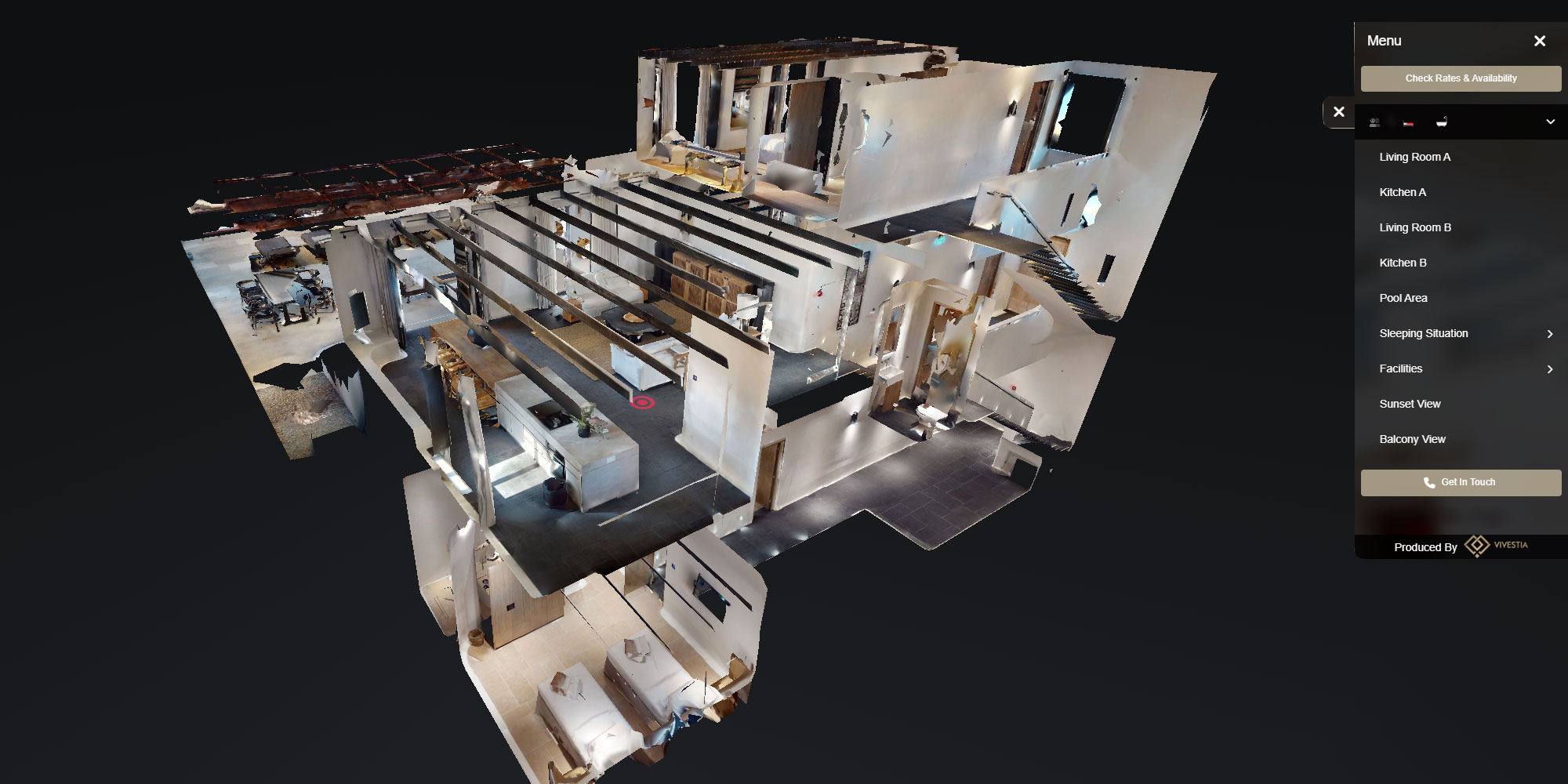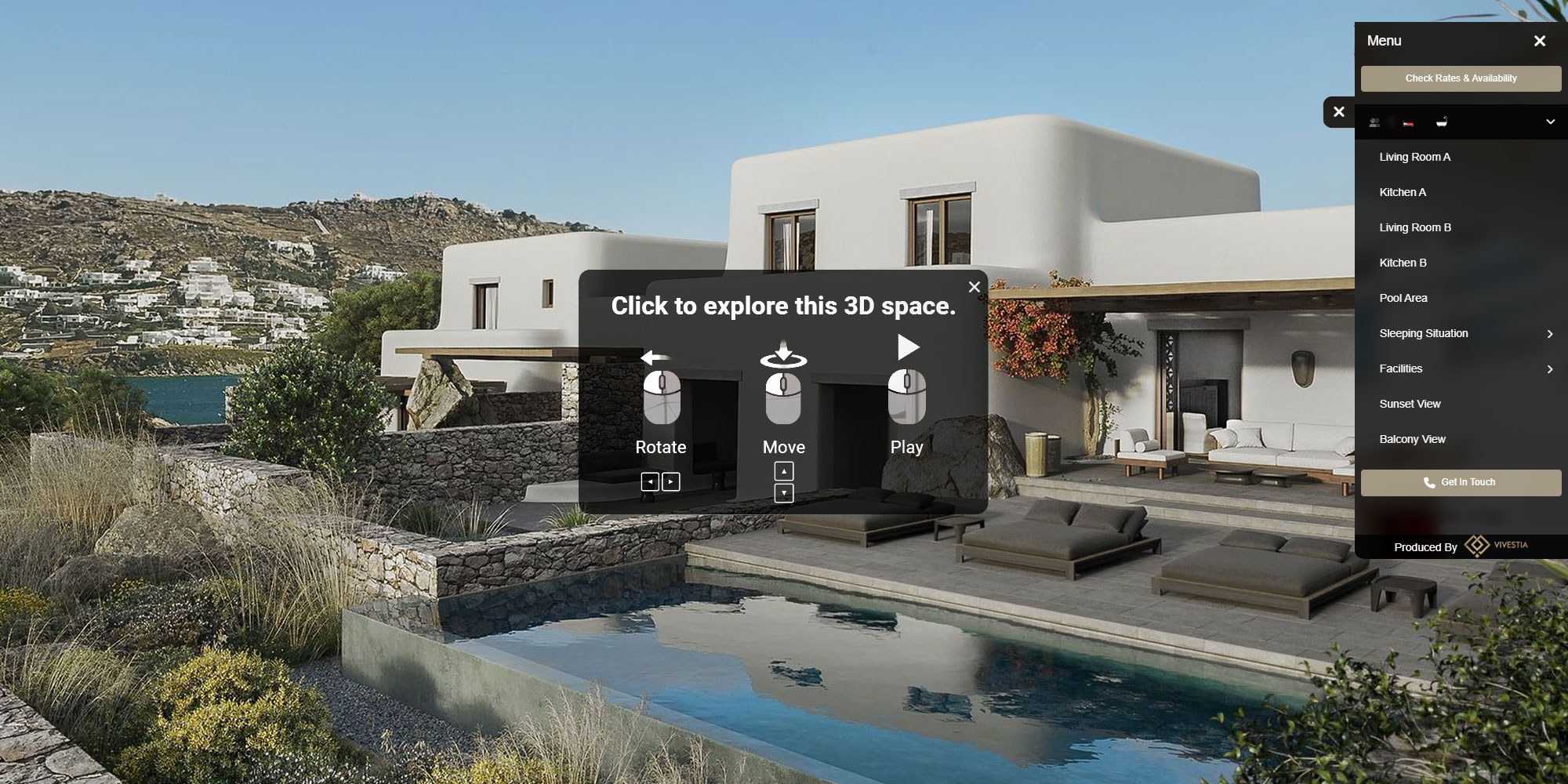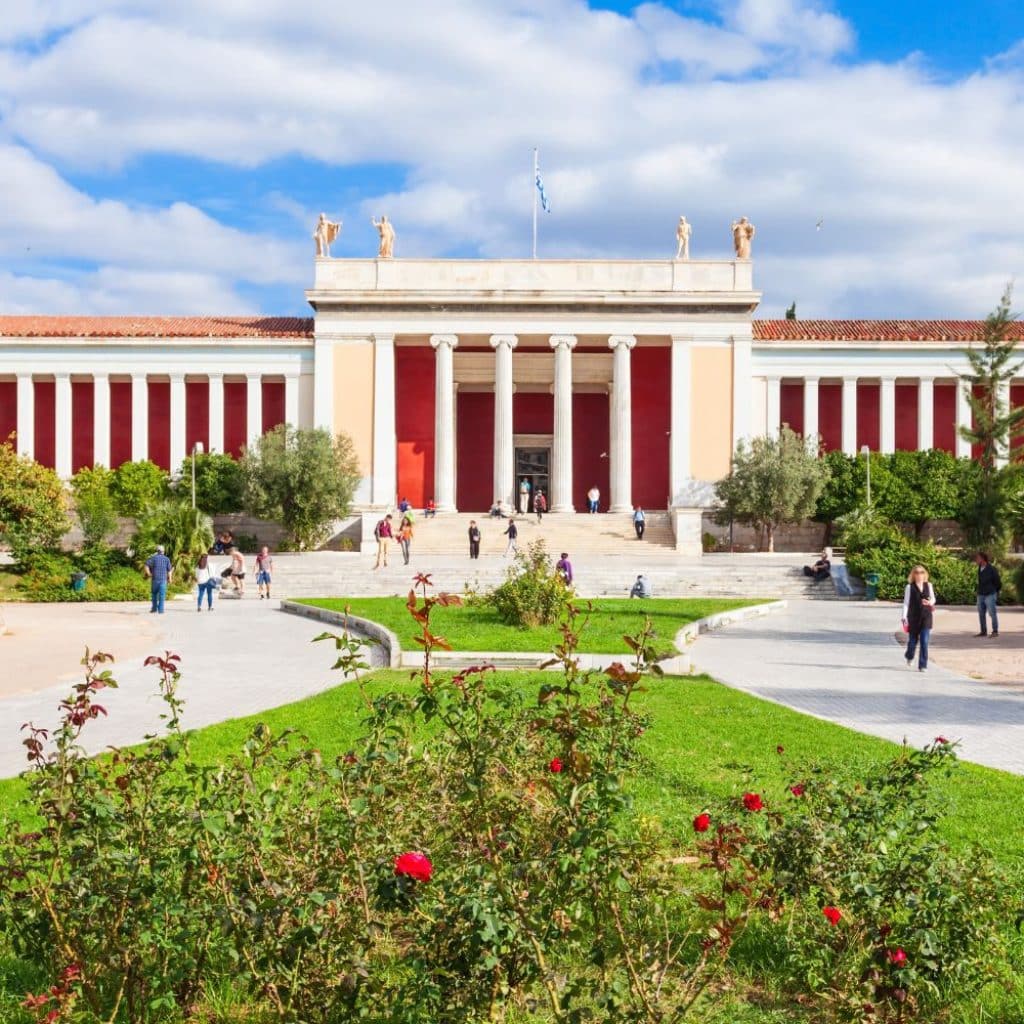Last Updated on 10/11/2023 by Manolis Maragkoudakis
360-Degree Technology: Exploring the Benefits in Various Industries"

360-Degree Technology
The future is here, and it’s all about 360-degree technology revolutionizing experiences across various industries. Whether you’re attending a virtual concert, exploring a potential travel destination, or even taking a virtual tour of real estate, 360-degree technology is enhancing the way we interact and engage with the world around us.
Imagine being able to fully immerse yourself in a world that feels incredibly real, where you can turn your head and see every angle, every detail. With 360-degree technology, this is now possible. This innovative technology uses a combination of video, photography, and virtual reality to provide a truly immersive experience that goes beyond traditional flat screens or photographs.
Not only is 360-degree technology changing the way we consume content, but it’s also opening up new possibilities for businesses and industries. From marketing and advertising to tourism and education, industries are finding innovative ways to leverage the power of 360-degree technology to engage and captivate their audience.
Applications of 360-degree technology in the entertainment industry
The entertainment industry has quickly embraced the power of 360-degree technology to create unique and immersive experiences for audiences. Virtual reality (VR) headsets have become increasingly popular, allowing users to step into a whole new world. Whether it’s attending a live concert from the comfort of your home or experiencing a thrilling roller coaster ride, 360-degree technology is transforming the way we consume entertainment.
One of the most exciting applications of 360-degree technology in the entertainment industry is in the field of gaming. VR gaming provides a level of immersion that traditional gaming platforms can’t match. Players can step into the shoes of their favorite characters and experience the game from a first-person perspective. The ability to look around and interact with the virtual environment creates a sense of presence and realism that is unparalleled.
Another area where 360-degree technology is making waves is in the film industry. Filmmakers are now using 360-degree cameras to capture scenes from all angles, allowing viewers to feel like they’re right in the middle of the action. This technology has given rise to a new form of storytelling, where the audience can choose where to look and explore different perspectives within a scene.
In addition to gaming and film, 360-degree technology is also being utilized in live events such as concerts and sports. VR headsets can transport users to the front row of a concert or place them in the middle of a stadium during a game. This immersive experience offers a new way to enjoy live events, especially for those who may not have the opportunity to attend in person.
The possibilities for 360-degree technology in the entertainment industry are endless. As the technology continues to evolve and become more accessible, we can expect to see even more innovative and immersive experiences that will reshape the way we consume entertainment.
Enhancing travel and tourism experiences with 360-degree technology
360-degree technology is also revolutionizing the travel and tourism industry by providing virtual experiences that give potential travelers a taste of what they can expect. Instead of relying solely on flat photographs or videos, travelers can now explore destinations in a more immersive and interactive way.
Virtual tours are becoming increasingly popular, allowing users to explore famous landmarks, museums, and even entire cities without leaving their homes. With 360-degree cameras capturing every detail, users can look around and feel like they’re actually there. This technology not only helps travelers plan their trips more effectively but also allows them to experience a destination before they even set foot on a plane.
In addition to virtual tours, 360-degree technology is also being used to create virtual reality experiences that simulate activities and adventures. For example, adventure travel companies are using VR to give potential customers a taste of what it’s like to go white water rafting, skydiving, or hiking in remote locations. These virtual experiences not only generate excitement but also help travelers make more informed decisions about their travel plans.
Furthermore, hotels and resorts are utilizing 360-degree technology to provide virtual tours of their accommodations. Potential guests can explore different room types, check out amenities, and get a sense of the overall ambiance before making a reservation. This not only helps hotels showcase their offerings but also gives guests a more realistic idea of what to expect during their stay.
360-degree technology is transforming the way we explore and plan our travel experiences. By providing immersive and interactive virtual experiences, travelers can now make more informed decisions and have a greater sense of what to expect when they arrive at their destination.
360-degree technology in real estate and architecture
The real estate and architecture industries have also embraced 360-degree technology as a powerful tool for showcasing properties and designs. With the help of virtual reality and 360-degree cameras, potential buyers and clients can now take virtual tours of properties, giving them a realistic sense of the space and layout.
Virtual tours allow potential buyers to explore every room and corner of a property, giving them a better understanding of its features and functionality. This technology is especially beneficial for remote buyers or those who are unable to physically visit a property. Instead of relying on static photographs or videos, potential buyers can now walk through a property as if they were there in person.
In addition to virtual tours, 360-degree technology is also being used in the architectural design process. Architects can create virtual models of their designs, allowing clients to explore and interact with the spaces before construction begins. This not only helps clients visualize the final product but also provides an opportunity to make changes and improvements to the design before it becomes a reality.
Furthermore, 360-degree technology is also being utilized in the interior design industry. Designers can create virtual spaces where clients can try out different furniture arrangements, color schemes, and materials. This allows clients to see how different design choices will look and feel in the space before making any final decisions.
By harnessing the power of 360-degree technology, the real estate and architecture industries are transforming the way properties are marketed and designed. Virtual tours and interactive experiences give potential buyers and clients a more immersive and realistic understanding of properties and designs, ultimately enhancing the decision-making process.
Healthcare and 360-degree technology
The healthcare industry is not immune to the transformative power of 360-degree technology. From medical training and education to patient care and rehabilitation, this technology is making a significant impact on the way healthcare is delivered.
In medical education, 360-degree technology is being used to create immersive training experiences for medical students and professionals. Virtual reality simulations allow students to practice procedures and surgeries in a safe and controlled environment. This technology provides a realistic experience that can help improve skills and confidence before students work with real patients.
In patient care, 360-degree technology is being utilized to improve the experience and outcomes for patients. Virtual reality can be used to create calming and immersive environments for patients undergoing procedures or treatments. This technology has been shown to reduce anxiety and pain, ultimately improving patient comfort and satisfaction.
Furthermore, 360-degree technology is being used in physical and occupational therapy to assist with patient rehabilitation. Virtual reality simulations can be used to create interactive exercises that help patients regain mobility and coordination. This technology provides a more engaging and motivating experience for patients, leading to better outcomes and faster recovery times.
The integration of 360-degree technology in the healthcare industry has the potential to revolutionize medical education, patient care, and rehabilitation. By providing immersive and interactive experiences, this technology is enhancing the way healthcare professionals train, deliver care, and help patients recover.
Impact of 360-degree technology on marketing and advertising
The marketing and advertising industry has been quick to recognize the potential of 360-degree technology in engaging and captivating audiences. By providing immersive and interactive experiences, this technology has the power to create a deeper connection between brands and consumers.
360-degree videos and virtual reality experiences are becoming increasingly common in advertising campaigns. Brands are using this technology to transport consumers to different environments and engage them in unique ways. For example, a travel agency may use 360-degree videos to give potential customers a taste of what it’s like to visit a particular destination. This immersive experience not only generates excitement but also helps potential customers visualize themselves in that destination, making them more likely to book a trip.
In addition to advertising campaigns, 360-degree technology is also being used in product demonstrations. Brands can create virtual reality experiences that allow potential customers to interact with products and explore their features in a more immersive way. This technology provides a level of engagement that traditional product demonstrations can’t match, ultimately creating a more memorable and impactful experience.
Furthermore, 360-degree technology is also being utilized in experiential marketing. Brands can create virtual reality experiences that allow consumers to step into a brand’s story and immerse themselves in its values and offerings. This not only generates excitement and brand loyalty but also provides a unique way for brands to differentiate themselves from their competitors.
The impact of 360-degree technology on marketing and advertising is undeniable. By providing immersive and interactive experiences, brands can create a deeper connection with consumers and ultimately drive engagement, loyalty, and sales.
Future advancements in 360-degree technology
While 360-degree technology has already made significant strides in enhancing experiences across industries, the future holds even more exciting possibilities. As technology continues to evolve, we can expect to see advancements that will further push the boundaries of what is possible with 360-degree experiences.
One area that holds great promise is the development of more sophisticated and realistic virtual reality experiences. As VR headsets become more affordable and accessible, we can expect to see an increase in the quality and variety of virtual reality content. This will allow users to have even more immersive and realistic experiences, whether it’s exploring a virtual world, attending a live event, or interacting with products.
Another area of future advancement is in the integration of 360-degree technology with other emerging technologies such as artificial intelligence (AI) and augmented reality (AR). By combining these technologies, we can create even more interactive and personalized experiences. For example, AI can be used to analyze user behavior and preferences to provide personalized recommendations and content. AR can be used to overlay virtual elements onto the real world, creating a seamless blend of virtual and physical experiences.
Furthermore, advancements in camera technology will also play a crucial role in the future of 360-degree experiences. As cameras become smaller, more affordable, and capable of capturing higher resolutions, we can expect to see even more realistic and detailed 360-degree content. This will further enhance the immersive nature of these experiences and provide users with even more realistic and engaging virtual environments.
The future of 360-degree technology is filled with endless possibilities. As technology continues to evolve and become more accessible, we can expect to see even more innovative and immersive experiences that will reshape the way we interact with the world around us.
Conclusion
360-degree technology is revolutionizing experiences across industries. From entertainment and travel to real estate and healthcare, this innovative technology is transforming the way we interact and engage with the world around us. Whether it’s attending a virtual concert, exploring a potential travel destination, or even taking a virtual tour of a property, 360-degree technology provides a level of immersion and interactivity that goes beyond traditional forms of media.






Post Discussion